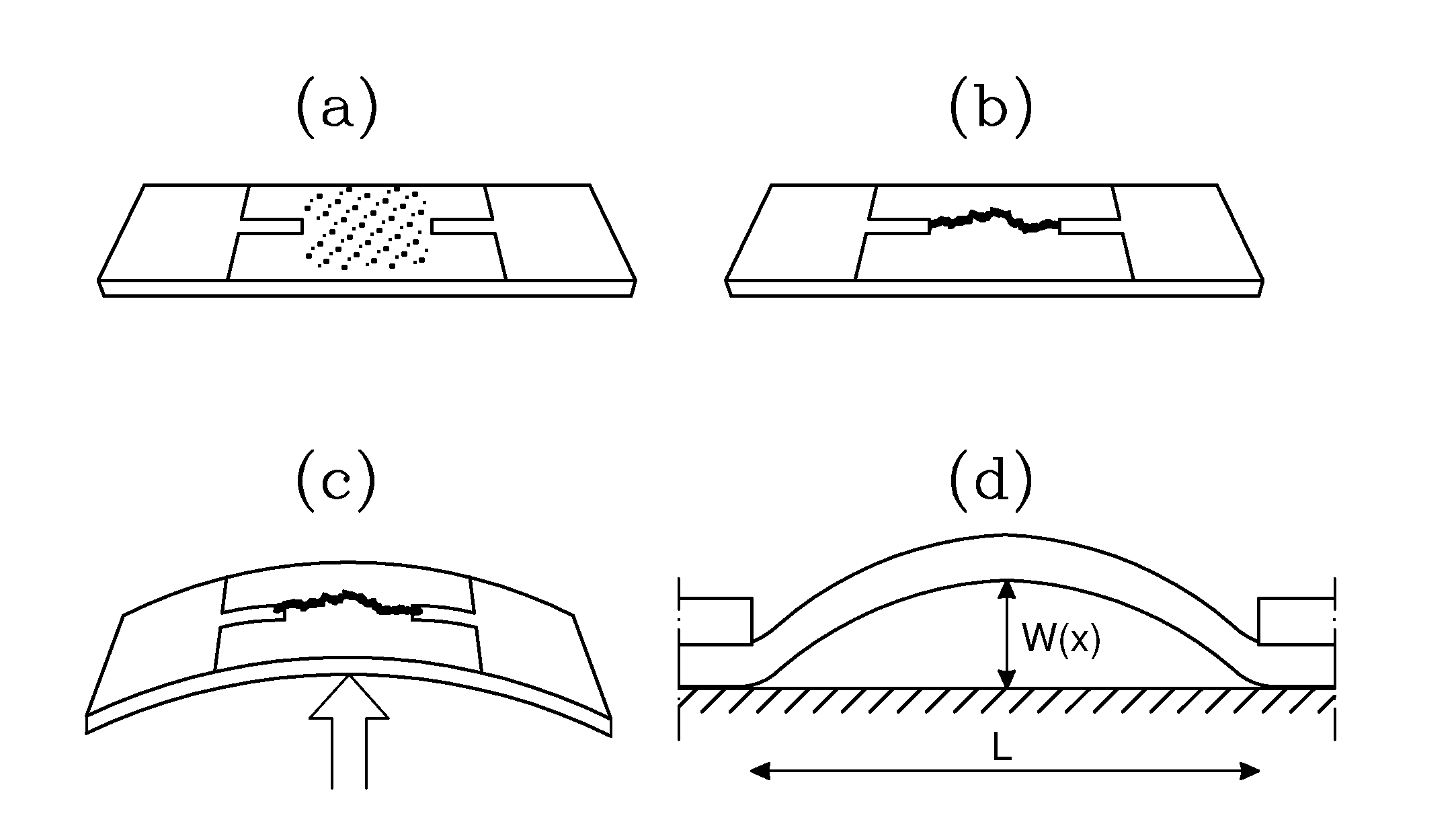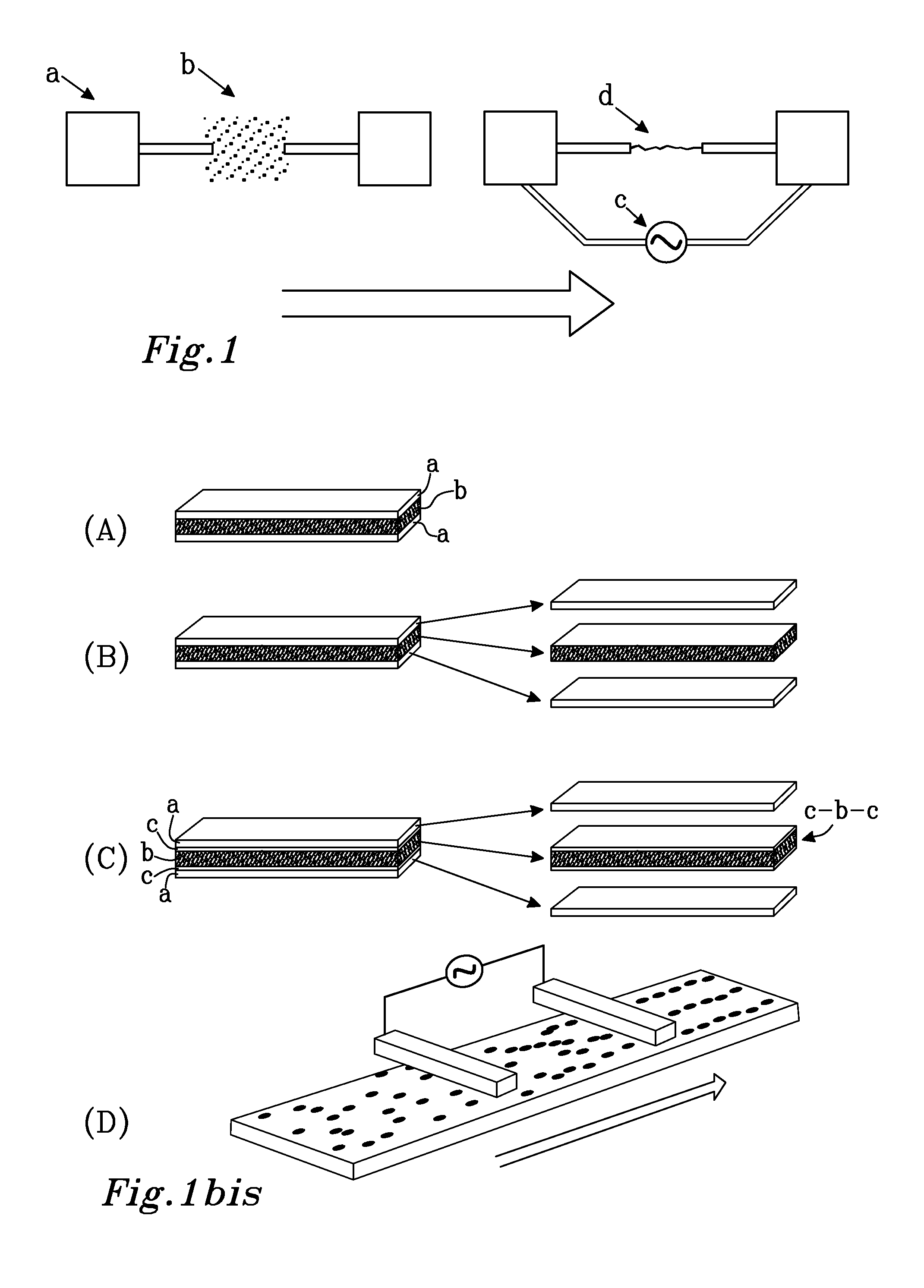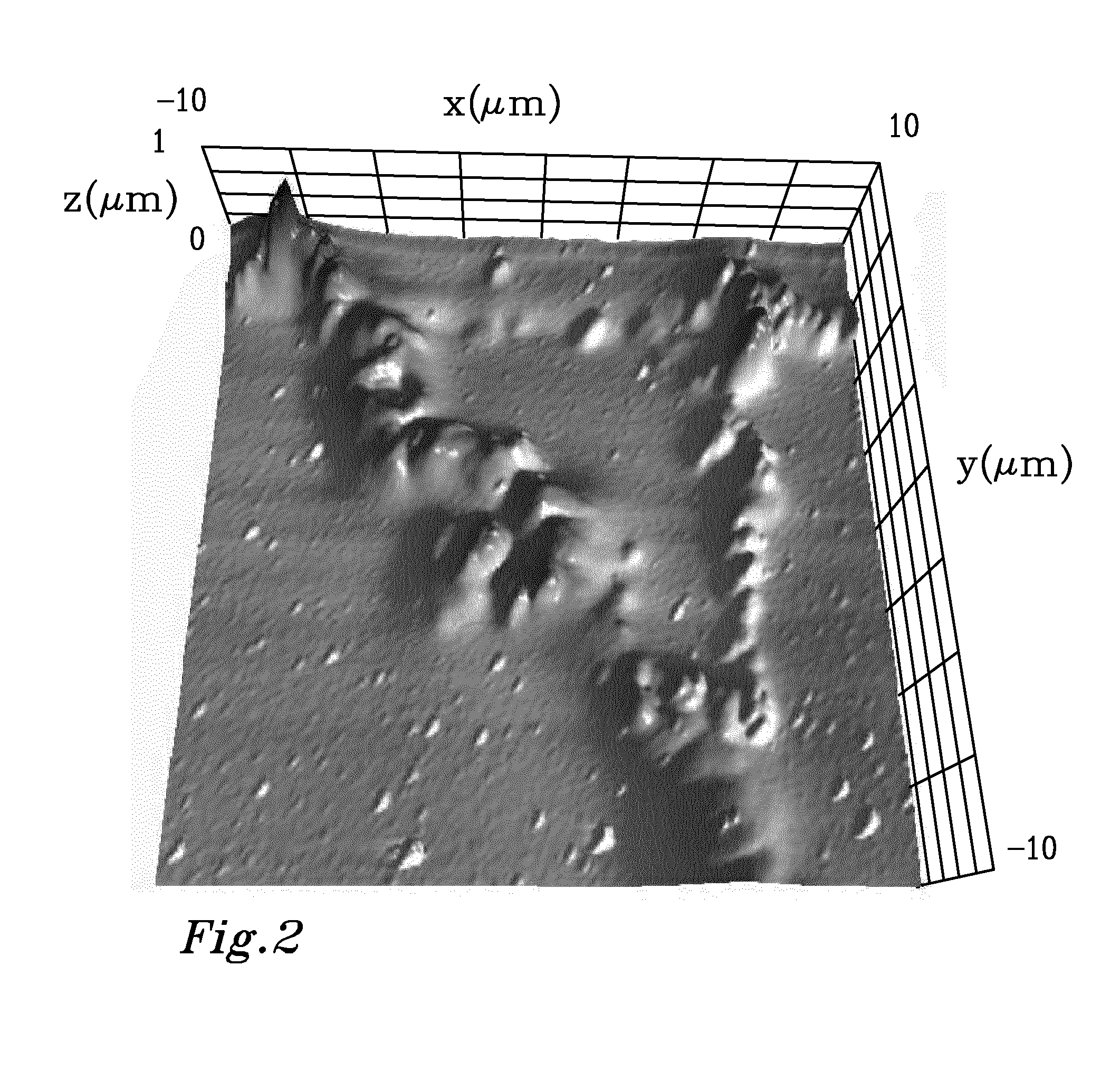Method for assembling conductive particles into conductive pathways and sensors thus formed
- Summary
- Abstract
- Description
- Claims
- Application Information
AI Technical Summary
Benefits of technology
Problems solved by technology
Method used
Image
Examples
example 1
[0155]This example concerns the applicability of the alignment method, the use of alignment for formation of individual aligned chains in the predetermined positions.
[0156]The employed conductive particles were carbon black (CB) from Alfa Aesar, carbon nano cones CNC from n-Tec AS (Norway) and iron oxide (FeO.Fe2O3) from Sigma-Aldrich.
[0157]The employed polymer matrix was a two component low viscosity adhesive formed by combining Araldite AY 105-1 (Huntsman Advanced Materials GmbH) with low viscosity epoxy resin with Ren HY 5160 (Vantico AG).
[0158]The conductive particles were mixed in the adhesive by stirring for 30 minutes. Due to the high viscosity of mixture, efficient mixing is possible only up to 20 vol-%. of particles.
[0159]Estimated percolation threshold of these materials are at ˜2 vol-%. The mixtures are conductive above and insulators below this threshold. Particle loads of 1 / 10 of the estimated percolation threshold were used.
[0160]The particles in the matrix were aligne...
example 2
[0164]In FIG. 1b is shown removal of electrodes after alignment and thus freestanding aligned film even in the case where the matrix is adhesive. The alignment also occurs if the electrodes do not touch the material and so the alignment can be performed from the distance. When the material and electrodes are moved, continuous or stepwise, with respect to each other during the alignment, this allows continuous alignment processing and different geometries. Three possible options for the alignment settings are illustrated in FIG. 1b that shows aligned film with (A-B) and without (C-D) electrical contacts between electrodes (a) and material (b). In the case (A) the aligned film forms permanent connection between the electrodes. In the case (B) the electrodes and material are only loosely joined together and can be moved apart after alignment. In the case (C) there are insulating layers (c) between the material and electrodes and they are easily moved apart after the alignment even in t...
example 3
[0166]This example concerns the applicability of the alignment method, the use of alignment for formation of individual aligned chains in the predetermined positions.
[0167]The procedure was otherwise similar to that in Example 1 but instead of generic surface the particle chain is aligned on the AFM cantilever. When the cantilever is bending, influenced due to the changing surface forces, the aligned pathway gets microscopically stretched and the particles become disconnected from each other. This influences the conductivity through the particle chain. This allows the use of aligned chain as a sensor of surface properties of the surface studied by the cantilever. This setting is illustrated in FIG. 3, where the upper image to the right illustrates a connected path, and the lower image (bent state) illustrates a disconnected path.
PUM
| Property | Measurement | Unit |
|---|---|---|
| Electric field | aaaaa | aaaaa |
| Electric field | aaaaa | aaaaa |
| Temperature | aaaaa | aaaaa |
Abstract
Description
Claims
Application Information
 Login to View More
Login to View More - R&D
- Intellectual Property
- Life Sciences
- Materials
- Tech Scout
- Unparalleled Data Quality
- Higher Quality Content
- 60% Fewer Hallucinations
Browse by: Latest US Patents, China's latest patents, Technical Efficacy Thesaurus, Application Domain, Technology Topic, Popular Technical Reports.
© 2025 PatSnap. All rights reserved.Legal|Privacy policy|Modern Slavery Act Transparency Statement|Sitemap|About US| Contact US: help@patsnap.com



